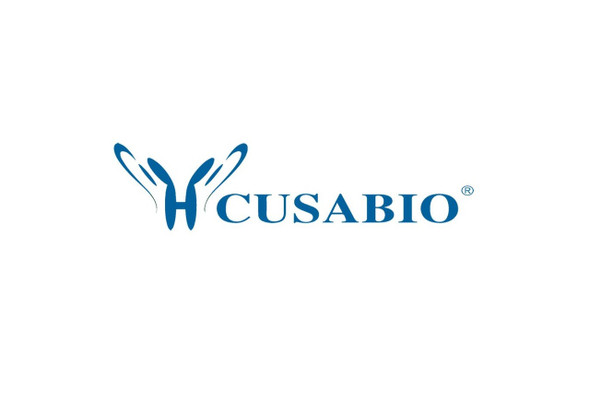Cusabio Virus & Bacteria Recombinants
Recombinant Enterococcus faecalis Gelatinase (gelE) | CSB-EP769310ELW
- SKU:
- CSB-EP769310ELW
- Availability:
- 3 - 7 Working Days
Description
Recombinant Enterococcus faecalis Gelatinase (gelE) | CSB-EP769310ELW | Cusabio
Alternative Name(s): Coccolysin
Gene Names: gelE
Research Areas: Others
Organism: Enterococcus faecalis (strain ATCC 700802 / V583)
AA Sequence: VGSEVTLKNSFQVAFNVPVEKSNTGIALHGTDNTGVYHAVVDGKNNYSIIQAPSLVALNQNAVDAYTHGKFVKTYYEDHFQRHSIDDRGMPILSVVDEQHPDAYDNAFWDGKAMRYGETSTPTGKTYASSLDVVGHEMTHGVTEHTAGLEYLGQSGALNESYSDLMGYIISGASNPEIGADTQSVDRKTGIRNLQTPSKHGQPETMAQYDDRARYKGTPYYDQGGVHYNSGIINRIGYTIIQNLGIEKAQTIFYSSLVNYLTPKAQFSDARDAMLAAAKVQYGDEAASVVSAAFNSAGIGAKEDIQVNQPSESVLVNE
Source: E.coli
Tag Info: N-terminal 6xHis-SUMO-tagged
Expression Region: 193-510aa
Sequence Info: Full Length of Mature Protein
MW: 50.5 kDa
Purity: Greater than 90% as determined by SDS-PAGE.
Relevance: Metalloprotease capable of the hydrolysis of insoluble hydrophobic substrates. Hydrolyzes azocoll and gelatin and, at a lower rate, soluble and insoluble collagens. Does not cleave short synthetic peptides. Preferentially hydrolyzes the 24-Phe-|-Phe-25 bond in the insulin B-chain, followed by the 5-His-|-Leu-6 bond. Inactivates endothelin-1, primarily by cleavage of the 5-Ser-|-Leu-6 and 16-His-|-Leu-17 bonds. Hydrolyzes the alpha chain of C3 to generate a C3b-like protein. Inhibits complement-mediated hemolysis and opsinization of bacteria. Hydrolyzes the insect antimicrobial peptide cecropin. Decreases the length of E.faecalis chains via the activation of autolysin. Degrades polymerized fibrin.
Reference: "Nucleotide sequence of the gelatinase gene (gelE) from Enterococcus faecalis subsp. liquefaciens."Su Y.A., Sulavik M.C., He P., Makinen K.K., Makinen P.L., Fiedler S., Wirth R., Clewell D.B.Infect. Immun. 59:415-420(1991)
Storage: The shelf life is related to many factors, storage state, buffer ingredients, storage temperature and the stability of the protein itself. Generally, the shelf life of liquid form is 6 months at -20?/-80?. The shelf life of lyophilized form is 12 months at -20?/-80?.
Notes: Repeated freezing and thawing is not recommended. Store working aliquots at 4? for up to one week.
Function: Metalloprotease capable of the hydrolysis of insoluble hydrophobic substrates. Hydrolyzes azocoll and gelatin and, at a lower rate, soluble and insoluble collagens. Does not cleave short synthetic peptides. Preferentially hydrolyzes the 24-Phe-|-Phe-25 bond in the insulin B-chain, followed by the 5-His-|-Leu-6 bond. Inactivates endothelin-1, primarily by cleavage of the 5-Ser-|-Leu-6 and 16-His-|-Leu-17 bonds. Hydrolyzes the alpha chain of C3 to generate a C3b-like protein. Inhibits complement-mediated hemolysis and opsinization of bacteria. Hydrolyzes the insect antimicrobial peptide cecropin. Decreases the length of E.faecalis chains via the activation of autolysin. Degrades polymerized fibrin.
Involvement in disease:
Subcellular Location: Secreted, extracellular space
Protein Families: Peptidase M4 family
Tissue Specificity:
Paythway:
Form: Liquid or Lyophilized powder
Buffer: If the delivery form is liquid, the default storage buffer is Tris/PBS-based buffer, 5%-50% glycerol. If the delivery form is lyophilized powder, the buffer before lyophilization is Tris/PBS-based buffer, 6% Trehalose, pH 8.0.
Reconstitution: We recommend that this vial be briefly centrifuged prior to opening to bring the contents to the bottom. Please reconstitute protein in deionized sterile water to a concentration of 0.1-1.0 mg/mL.We recommend to add 5-50% of glycerol (final concentration) and aliquot for long-term storage at -20?/-80?. Our default final concentration of glycerol is 50%. Customers could use it as reference.
Uniprot ID: Q833V7
HGNC Database Link: N/A
UniGene Database Link: N/A
KEGG Database Link: KEGG
STRING Database Link: STRING
OMIM Database Link: N/A









